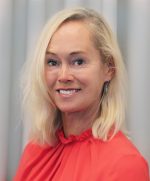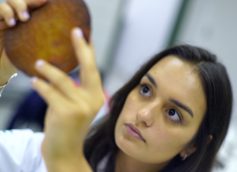heading
The project goal was the development of a sustainable alternative to textile effluent treatment, through biomembranes produced with wine by-products. The biomembranes were produced in a static fermentation for 14 days. The biomembranes were tested as adsorbent material to remove the indigo carmine dye in three different concentrations (5 mg/L, 15 mg/L, and 50 mg/L). Removal of 50%, 80%, and 80%, respectively, was observed in the three concentrations. Two industrial textile effluents were tested: green and red. The alternative treatment removed 50% of green effluent and 30% of red effluent. This project has social, environmental, and scientific relevance in developing a sustainable alternative for textile effluent treatment, addressing 8 of the 17 SDSs.
This is how I came up with the idea for this project:The idea for this project come up from observing numerous reports about water resource contamination due to textile effluents. Intrigued to solve this problem, we thought of developing an alternative with low-cost and environmentally friendly treatment using biomembranes.

Documentation
BIOGRAPE: INNOVATION FOR TEXTILE EFFLUENT TREATMENT USING BACTERIAL CELLULOSE FROM WINE RESIDUE The project goal was the development of a sustainable alternative to textile effluent treatment, through biomembranes produced with wine by-products. The biomembranes were produced in a static fermentation for 14 days. The biomembranes were tested as adsorbent material to remove the indigo carmine dye in three different concentrations (5 mg/L, 15 mg/L, and 50 mg/L). Removal of 50%, 80%, and 80%, respectively, was observed in the three concentrations. Two industrial textile effluents were tested: green and red. The alternative treatment removed 50% of green effluent and 30% of red effluent. This project has social, environmental, and scientific relevance in developing a sustainable alternative for textile effluent treatment, addressing 8 of the 17 SDSs.
